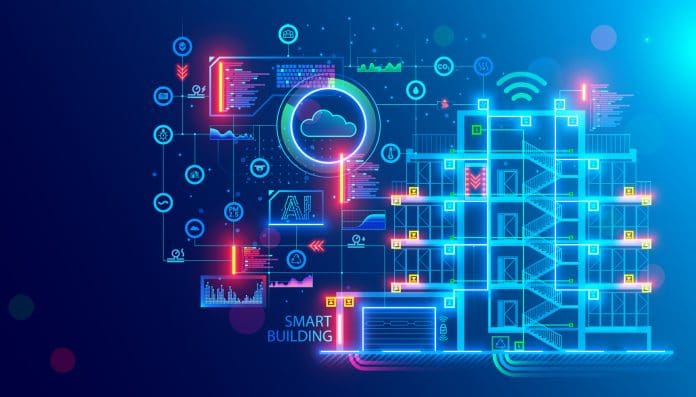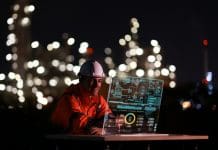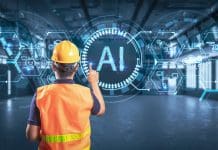The construction industry is witnessing a transformative shift driven by the integration of advanced informatic technologies like AI and IoT, paving the way for the development of smart buildings that promise unprecedented levels of efficiency, sustainability, and adaptability
As digital twins and renewable energy systems become integral to building design and management, the potential for enhanced security and personalised tenant experiences grows. Yet, with such rapid advancements comes a host of new challenges and considerations that industry professionals must navigate. What implications might these changes hold for the future landscape of construction?
Evolution of smart buildings
The evolution of smart buildings represents a paradigm shift from traditional construction practices to sophisticated, interconnected systems that harness real-time data to enhance functionality and sustainability. Building technologies have progressed to integrate IoT and AI, enabling the seamless collection and analysis of data to optimise building performance. Through data analytics, smart buildings can monitor energy usage, air quality, and occupancy levels, leading to improved energy efficiency and sustainability. These advancements support urban development by contributing to the creation of resilient and environmentally conscious communities.
Automation plays a pivotal role in this transformation, with systems adjusting lighting, heating, and cooling based on real-time insights. This not only enhances energy efficiency but also improves occupant comfort and safety, aligning with the broader goals of sustainability. The integration of building technologies ensures that smart buildings can adapt to the dynamic needs of urban environments, fostering a proactive approach to resource management and environmental stewardship.
As urban development continues to prioritise sustainability, the evolution of smart buildings underscores the importance of data-driven decision-making. By leveraging cutting-edge technologies, smart buildings set the benchmark for future construction practices, paving the way for more sustainable and efficient urban landscapes.
Key technological innovations
Building upon the evolution of smart buildings’ role in sustainable urban development, key technological innovations are propelling the industry towards unparalleled efficiency and resilience. At the forefront is Building Information Modeling (BIM), which enhances collaborative design and clash detection, notably reducing errors by up to 90% in construction projects. This technology fosters seamless communication among stakeholders, ensuring projects are delivered on time and within budget.
Drones play a pivotal role in transforming construction landscapes by conducting aerial surveys and safety inspections, thereby improving efficiency and reducing project timelines by 40%. Meanwhile, 3D printing is revolutionising construction by accelerating building speed and reducing material waste by up to 60%. This innovation not only facilitates intricate designs but also achieves cost savings of up to 30%.
Augmented reality (AR) is enhancing project planning and client presentations, offering improved visualiation and streamlining maintenance processes. Finally, robotics automation is significantly enhancing productivity, precision, and safety in construction tasks. By integrating robotics, companies can achieve up to a 50% reduction in construction time and costs.
Digital twins are set to revolutionise predictive maintenance by creating real-time, virtual replicas of buildings. This innovation will allow for intricate monitoring and analysis, ensuring systems operate at peak efficiency while minimising downtime.
Role of IoT and AI
As cutting-edge technologies continue to evolve, the integration of the Internet of Things (IoT) and Artificial Intelligence (AI) in smart buildings is transforming the way we manage and interact with our built environments. By leveraging IoT sensors and AI algorithms, these technologies enhance operational efficiency and sustainability. IoT enables real-time monitoring, providing critical data that allows for proactive adjustments to building systems. This data-driven approach facilitates predictive maintenance, considerably reducing downtime and extending the lifespan of building assets.
Consider the following benefits of integrating IoT and AI in smart buildings:
1. Enhanced comfort: IoT sensors collect data on occupancy and environmental conditions, allowing for automatic adjustments to heating, ventilation, and air conditioning systems, thereby optimising occupant comfort.
2. Predictive maintenance: AI algorithms analyse the collected data to forecast maintenance needs, enabling timely interventions that prevent costly breakdowns.
3. Resource Optimisation: Real-time data from IoT devices enables efficient resource management, such as optimising water and electricity usage, leading to cost savings.
4. Improved decision-making: AI-driven analytics provide actionable insights, empowering facility managers to make informed decisions that enhance overall building performance.
Through these advanced informatic technologies, smart buildings are not only becoming more efficient but are also setting new standards in construction practices.
Energy management systems
Energy management systems are a cornerstone of smart building technology, designed to optimise energy consumption by seamlessly integrating HVAC, lighting, and other essential systems. These systems utilise real-time data from IoT devices to adjust heating, cooling, and lighting levels based on occupancy and environmental conditions. This dynamic approach not only enhances comfort but also reduces energy costs, with potential savings reaching up to 30% through automated optimisation.
The integration of cloud computing with energy management systems allows for centralised control and monitoring, facilitating sustainable operations. By collecting and analysing data from various sensors, these systems provide building managers with insights into energy usage patterns, enabling proactive adjustments and maintenance. This ensures efficient resource utilisation, which is vital for minimising the environmental impact of buildings.
In addition to cost savings, energy management systems play a pivotal role in promoting sustainability within smart buildings. By prioritising efficient resource utilisation, these systems contribute to a reduced carbon footprint, aligning with global efforts to combat climate change. As smart building technologies continue to evolve, the role of energy management systems in achieving sustainable operations will become increasingly important, paving the way for a more environmentally responsible future in construction.
Enhancing safety and security
Informatic technologies provide a multifaceted approach to enhancing safety on construction sites and within completed structures, ensuring environments are secure and risk-free.
- Advanced security systems: Integrated systems are the backbone of advanced security in smart buildings. They detect intrusions and manage access control through biometric systems, ensuring only authorised individuals gain entry.
- Monitoring and management: IoT devices continuously monitor various parameters such as temperature, humidity, and structural integrity, alerting management teams to any anomalies that could compromise safety.
- Automated emergency response: In the event of an emergency, automated systems activate alarms, notify authorities, and guide occupants to safety exits, reducing response times and mitigating potential harm.
- Data Analytics: By analysing patterns through data analytics, smart buildings can identify potential risks, allowing for proactive measures to prevent incidents before they occur.
Incorporating these technologies into the fabric of smart buildings not only enhances security but also fosters a safer construction environment, ultimately advancing the sector toward a future where safety and efficiency coexist seamlessly.
Real-time data utilisation
Harnessing the power of real-time data is transforming how smart buildings operate and manage their resources. Real-time data utilisation involves the continuous collection and analysis of information through sensors and actuators embedded within the building infrastructure. These sensors, often part of the IoT ecosystem, monitor various parameters such as temperature, humidity, occupancy, and energy consumption, enabling a dynamic understanding of the building’s environment. Advanced informatic technologies process this data to optimise building performance, ensuring energy efficiency and enhanced occupant comfort.
The immediate availability of real-time data allows building managers to make informed decisions swiftly. This capability facilitates predictive maintenance by identifying potential equipment failures before they occur, notably reducing downtime and maintenance costs. Additionally, real-time data supports proactive adjustments to building systems, such as automatically altering lighting and HVAC settings based on current conditions, thereby enhancing operational efficiency.
Advanced informatic technologies leverage real-time data to automate responses, contributing to a seamless and efficient smart building ecosystem. By integrating these technologies, smart buildings not only improve their operational efficiency but also contribute to sustainability goals by minimising energy waste and maximising resource utilisation.
Improving tenant experience
In the world of smart buildings, tenant experience is greatly enhanced through the integration of advanced informatic technologies. These innovations create personalised environments that cater to individual preferences, greatly improving occupant comfort. By employing automated systems, smart buildings offer customised settings that prioritise well-being and satisfaction, guaranteeing an ideal living and working atmosphere. The seamless user experience facilitated by these technologies is transforming how occupants interact with their environments.
Consider the following enhancements:
- Personalised lighting and climate control: Smart buildings adjust lighting and temperature based on individual preferences, promoting health and productivity.
- Automated security and access: Using IoT and AI, smart buildings provide secure and personalised access, enhancing safety and convenience.
- Interactive user interfaces: Advanced user interaction technologies allow occupants to control building features via smartphones or voice commands, increasing ease of use.
- Energy efficiency and environmental controls: Through real-time data analysis, buildings optimise energy usage, improving sustainability and reducing costs.
Emerging industry trends
Countries like the UK, Japan, and China are spearheading initiatives such as Construction 2025 and i-Construction to promote automation, quality enhancement, and sustainability.
A focus on sustainable practices is increasingly evident, as the industry embraces energy-efficient solutions to meet societal value needs. Research in intelligent construction emphasises prefabrication, smart construction sites, and automation, addressing energy optimisation challenges. These trends contribute to the industry’s evolution towards Industry 5.0, which aims for human-centric solutions and improved safety and productivity.
The following table highlights key global trends in the construction industry:
| Trend | Impact |
| Smart technologies | Drives innovation and efficiency |
| Energy optimisation | Reduces environmental impact |
| Advanced data | Enhances project management and design |
| Sustainable practices | Promotes eco-friendly building solutions |
Addressing implementation challenges
Confronting the implementation obstacles of smart buildings is essential for capitalising on the full potential of advanced informatic technologies in the construction industry. Significant hurdles such as initial investment costs, data privacy concerns, and interoperability issues must be addressed through thorough change management strategies. Effective deployment of these strategies can guarantee that smart buildings reach their full potential regarding operational efficiency and sustainability.
To overcome these challenges successfully, a multi-faceted approach should be employed:
- Specialised training programs: Equip stakeholders with the knowledge of new technologies, highlighting system interoperability and data management practices. These programs are vital for preparing personnel to handle the complexities of smart systems.
- Change management strategies: Implement robust frameworks to manage the shift from traditional to smart infrastructures, ensuring that all stakeholders are aligned with the new operational paradigms.
- Security and cyber risk mitigation: Develop protocols to safeguard against security threats and cyber risks, which are inherent in digitally connected environments.
- Legacy system integration: Address the challenges of integrating advanced technologies with existing systems to guarantee seamless operation.














